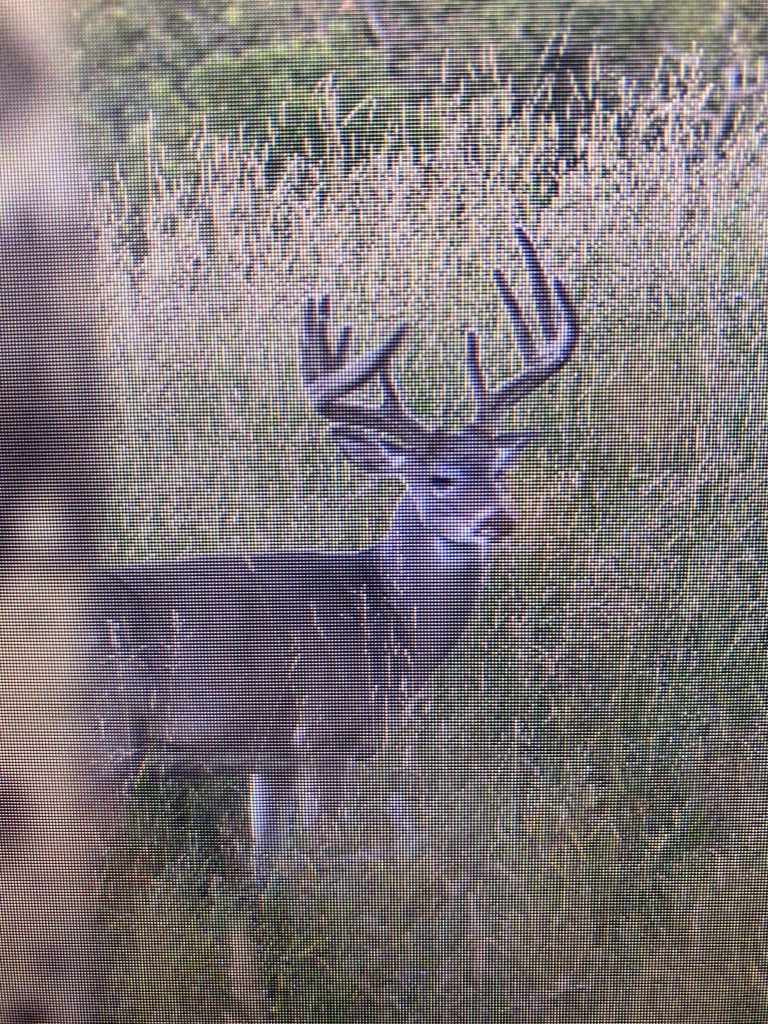Since the advent of social media and the increased popularity of hunting television programs, it’s become in vogue to give big bucks—the ones that will be the targets for the season—a catchy name. Monikers like Blade Runner, The Pope, High Tower, Junk Yard, Big Nasty and countless others abound. In some ways, this has always kind of annoyed me. Maybe it’s because we never have enough target bucks that we need a system to keep track of them. Heck, in many years, we don’t even have a target buck. Or maybe it’s just that I’m getting old, and I wish that kids would bend the brims of their hats. Still, I’ve never named any bucks. Sure, we’ll talk about seeing that big four-point or catching the six-point on camera, but to me, giving names to bucks that you hope to kill has always seemed a bit disrespectful. But that’s just me. Carry on if this is something you do. Just pull up your pants and don’t be offended by my comments.
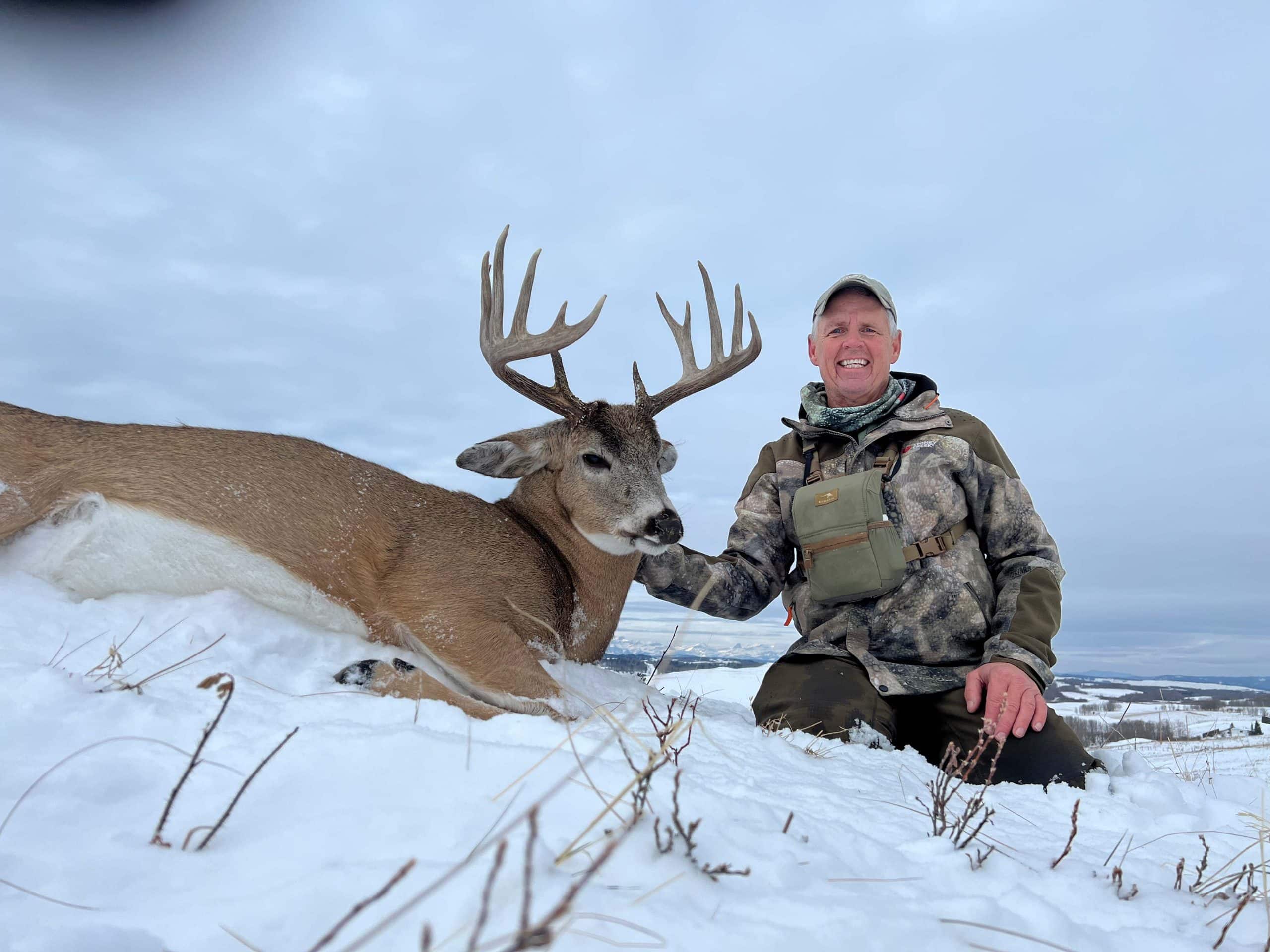
If there ever was a buck we were going to name it’s one I ran across for the first time four years ago here in Alberta. He was likely a three-year-old then, perhaps a four-year-old. He had a typical five-by-five frame with a split G2 on one side. We hunt an area of fairly high elevation in the foothills and typically don’t get big bucks here. Our bucks top out at 135 to 140 inches and are smaller in body than Whitetails are in other parts of the province. Taxonomists call this subspecies of Odocoileus virginianus “ochrourus,” versus the dakotenis subspecies found in most of the province. This isn’t a great place to be a trophy Whitetail hunter. Yet it’s close to home and it lends itself incredibly well to our favorite style of hunting, spot and stalk.
I thought about taking that buck that day, but I knew he was young, and it appeared to have tremendous potential. As he stood looking at me from about 50 yards away, I couldn’t help but think there was no way this buck was going to survive the few remaining days of the season. He finally grew tired of my company and hopped over the fence to the neighbor’s property, where three hunters were waiting. Surprisingly, a shot never followed. It wasn’t until January that I caught him on camera again.
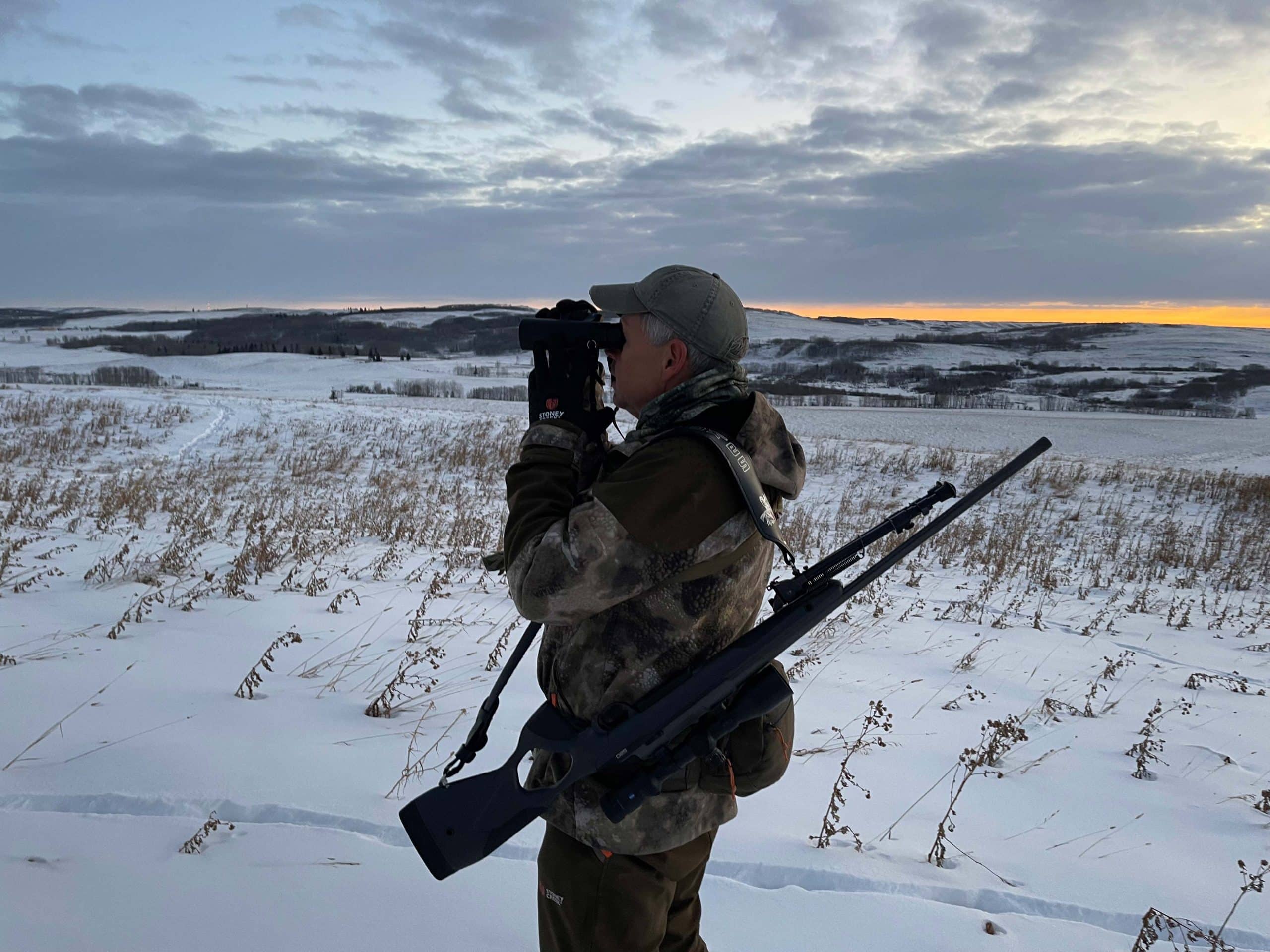
Packing It On
The following year, on opening day of archery season, Vanessa and I were working our way quietly along a bush trail when movement about 100 yards to our left caught my attention. It was the same buck, but he’d really packed on the inches. In velvet, he looked absolutely massive, but even stripped I was certain he’d stretch the tape to 165 inches or more. He’d blossomed into a true giant for our area.
We spent the next hour belly-crawling through the long grass and we finally got within 40 yards. I got the video camera going and Vanessa prepared for the shot. He didn’t see us, but it was like he sensed something was up and he slowly walked off and hopped back onto the neighbor’s place. A month later, while sitting in a blind in the early morning, we could see him and another large four-point coming up the trail where we had the blind. When he was still about 100 yards away, he split off from the other buck and headed up the hill. The four-by-four kept coming directly toward us and Vanessa took him with a well-placed arrow. We caught the other buck one time on trail camera in late November, but that was it.
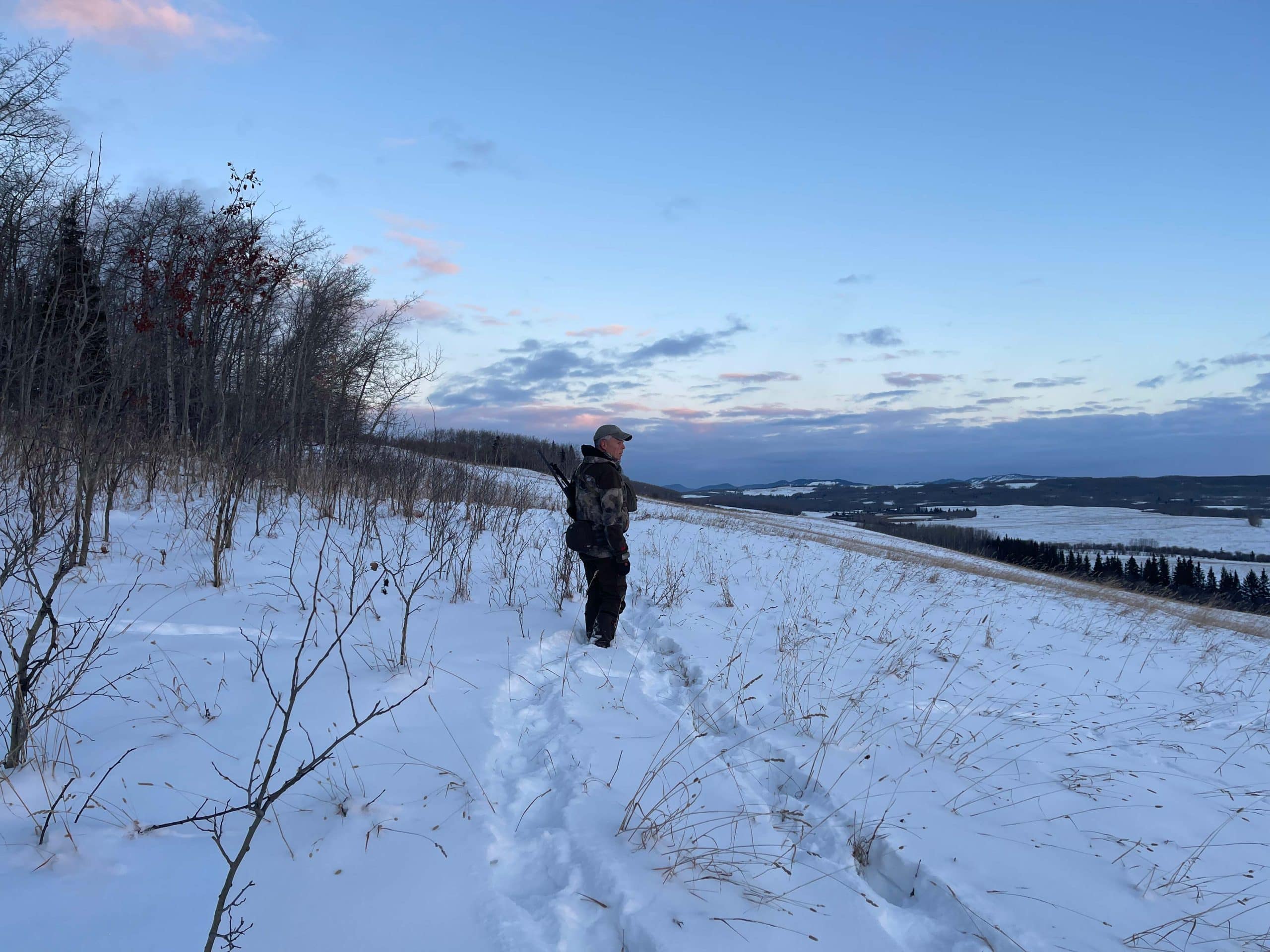
Still a 160
Over the next two years we’d occasionally get a picture of the buck on a trail camera, but it was never with any regularity, and most often it was in the dark. He still carried good mass and length in his fifth year and had developed a split on his other G2. In what I believe to be his sixth year, his antlers were beginning to decline, but he was still a 160-class deer. We never once laid eyes on him during those two years and we had very few trail camera pictures. He was becoming a ghost, like most old bucks do. Just knowing he was out there was all the motivation we needed to spend most of the season in search of him.
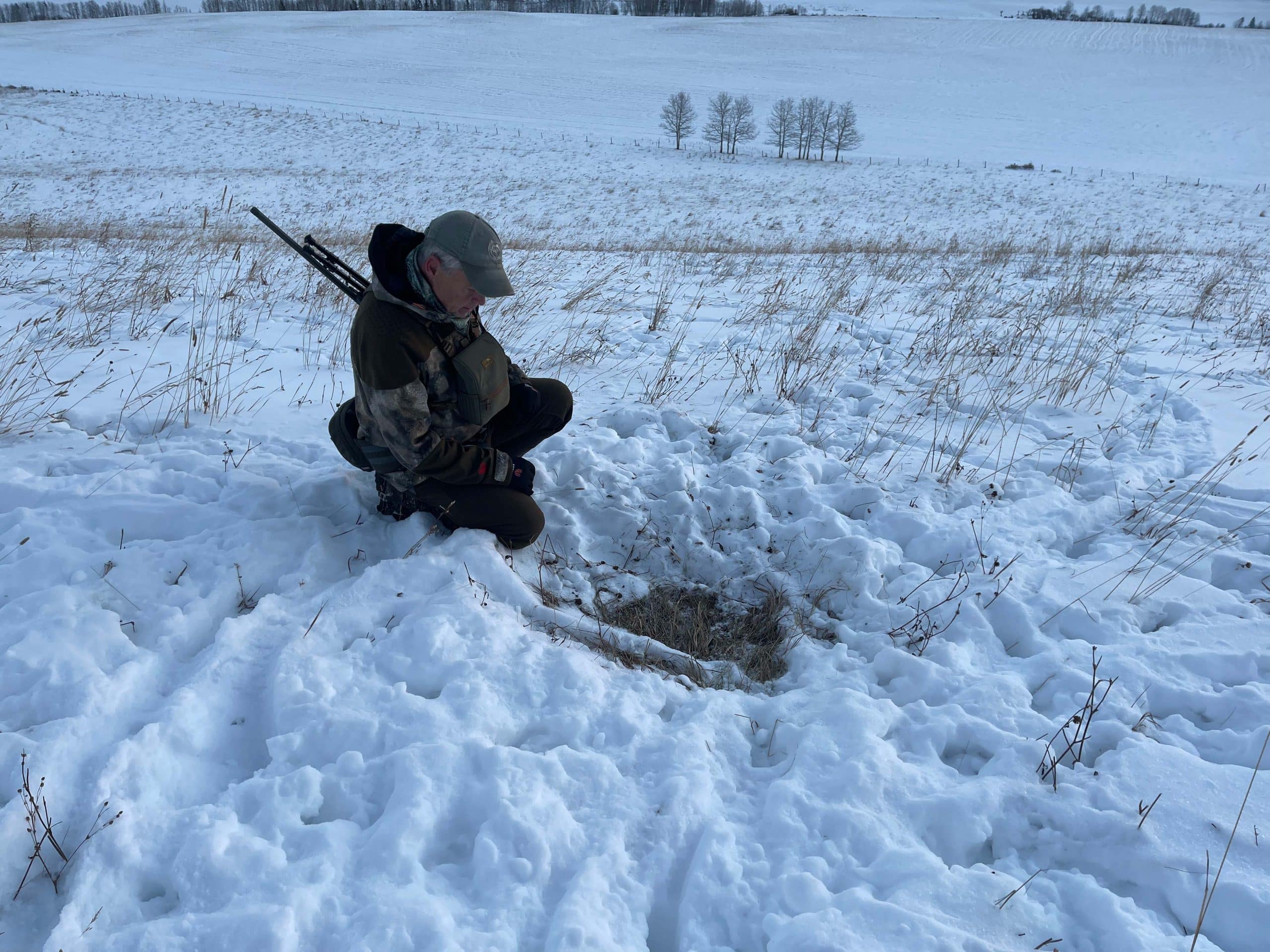
When this past season rolled around, we feared he hadn’t survived the winter. Cougars are quite common on the ridge he called home and every time we found a cougar kill, we held our breath hoping it wasn’t him. Then, in September, he just showed up on the trail camera one night. His antlers had gone downhill even more. We had always thought this buck had such a young-looking face, with his short nose, but there was no doubt it was him. His antlers were identical to the previous year albeit a bit smaller. Despite his appearance, he was unquestionably six years old and likely seven. He teased us with a few more nighttime pictures in September and then dropped off the radar as was typical of him.
The first part of the 2022 deer season was about as tough as it’s ever been. On the property we hunt, deer seem to totally vacate the land if there is deep snow on the ground. There was plenty of that in early November. We were fighting daily snowfall and drifting to keep a few trails open for the truck. There were few tracks to see and during a typical day, we’d spot a couple does and fawns. By November 11, we’d seen a grand total of two bucks, both of them young three-points. It had actually been close to 20 years since I’d killed my last Alberta Whitetail buck. With a freezer full of elk meat, I wasn’t too anxious to kill just any deer.
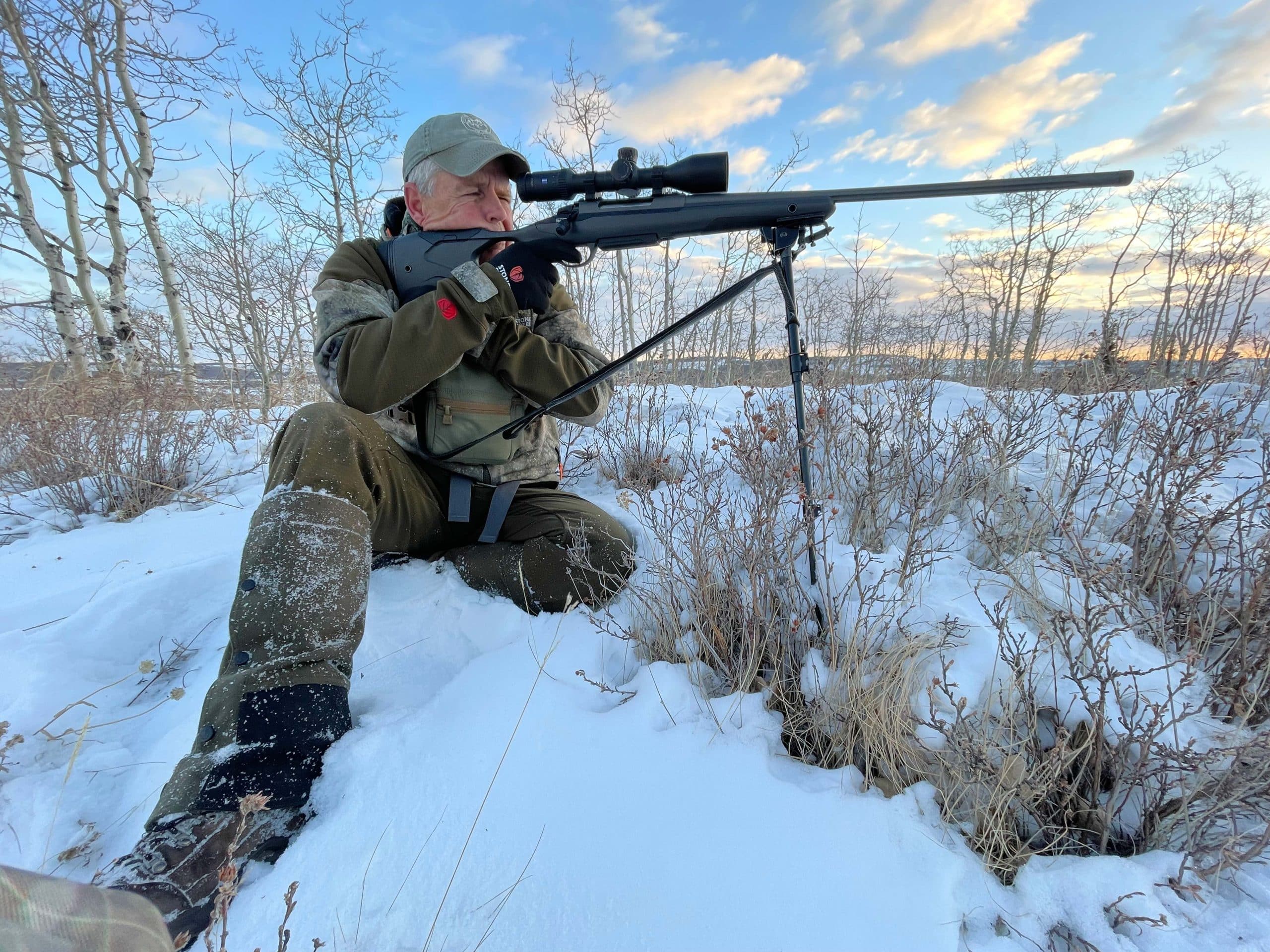
He’s Spotted, Asleep
The drifting snow finally got the better of the few truck trails we were keeping open, so on November 12, we decided to do a big walk on the property to get an idea the deer movement that was going on. We were both just getting over a nasty bout of COVID, so our energy levels were pretty low. After close to three hours of trudging through the knee-deep snow, we were both done. I suggested taking one quick look at an area at the south end of the property then calling it a day.
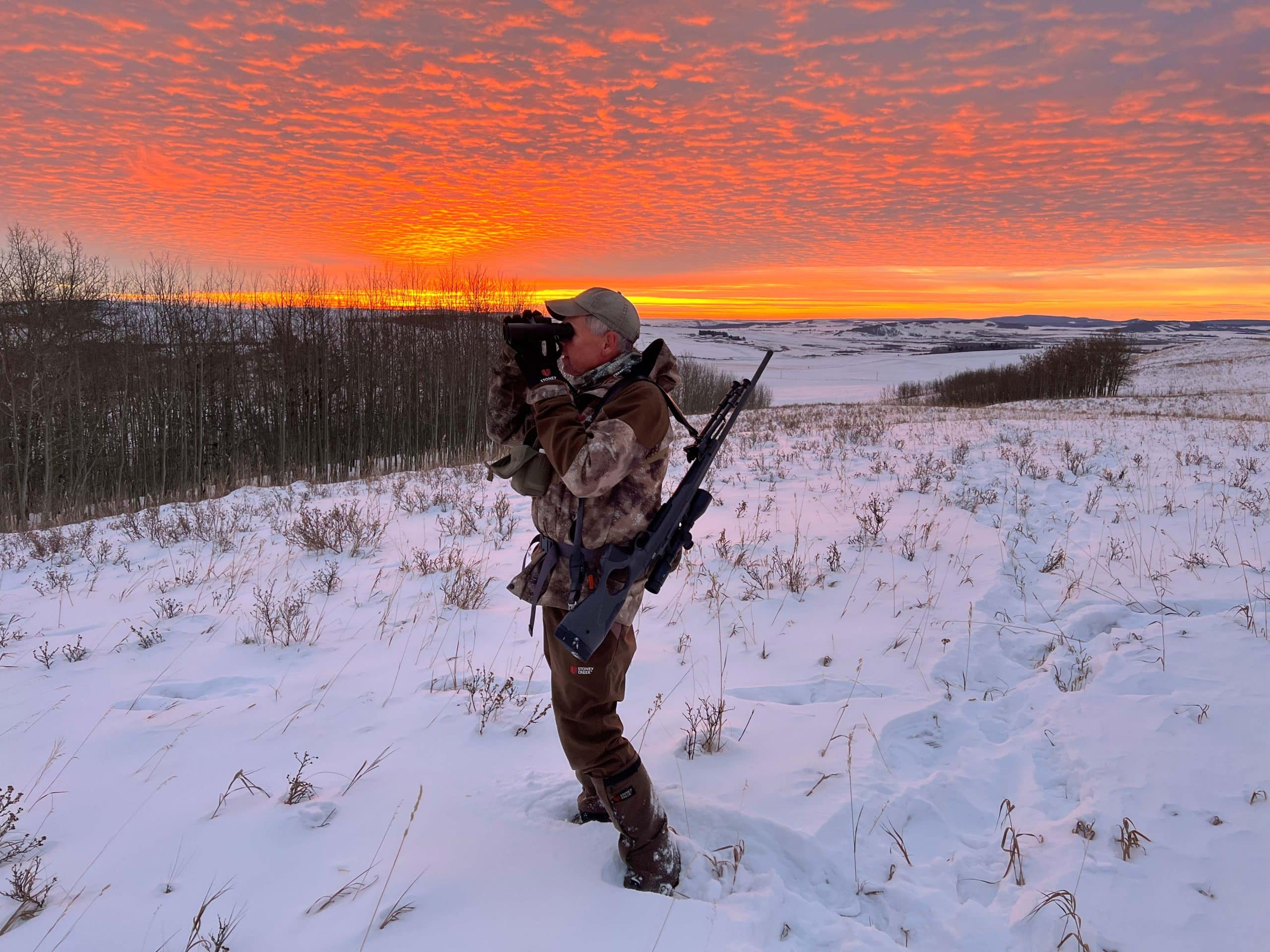
It was about 10:30 a.m. when Vanessa whispered, “There’s a buck!” Through the binoculars, I could see him bedded about 250 yards away. He hadn’t seen us, and the wind was in our favor, so we ducked down behind a small ridge. I hadn’t really taken much time to look at the buck for fear of being busted. The brief glimpse I got assured me he was a nice mature deer. We made our way around the ridge and then slowly crawled up it. To my surprise, the buck was still there, and he was sound asleep. Catching a big buck like this on an open aspen ridge was rare enough, but catching one asleep was almost unheard of.
I really didn’t look that closely at the buck. He had the appearance of a big mature deer for our area and the way he was lying obscured much of his antlers. I extended the legs on the bipod and confirmed with Vanessa that she had the video camera rolling. The big buck lurched from his bed at the impact of the bullet, but he couldn’t move forward. I chambered a second round and tucked it right behind his shoulder for safety. He went down.
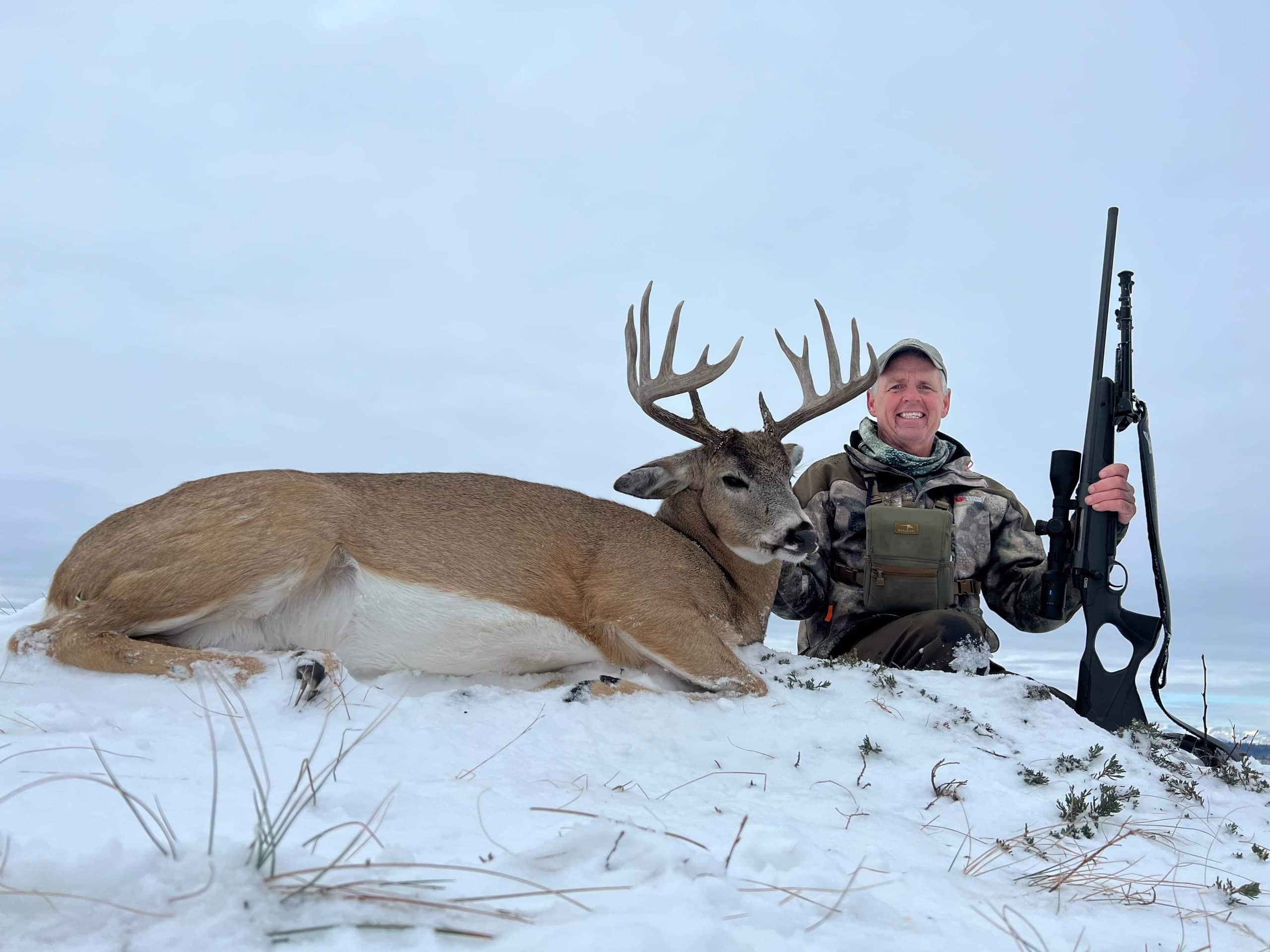
A Shot Hits Home
As we walked up on the buck, I could see he was everything and more that the brief glimpse had indicated. But when Vanessa suddenly blurted out, “That’s the big guy,” it hit home. It was indeed the buck that had held our attention for the past four years.
A surge of emotions ran over me. I was thrilled to have finally taken this buck that we had so much history with, but I somehow felt a bit empty knowing he was no longer running these foothill ridges. He had been the reason for getting out of bed many mornings when it was cold and snowing or when I was sick. Knowing he was out there had been a great motivator.
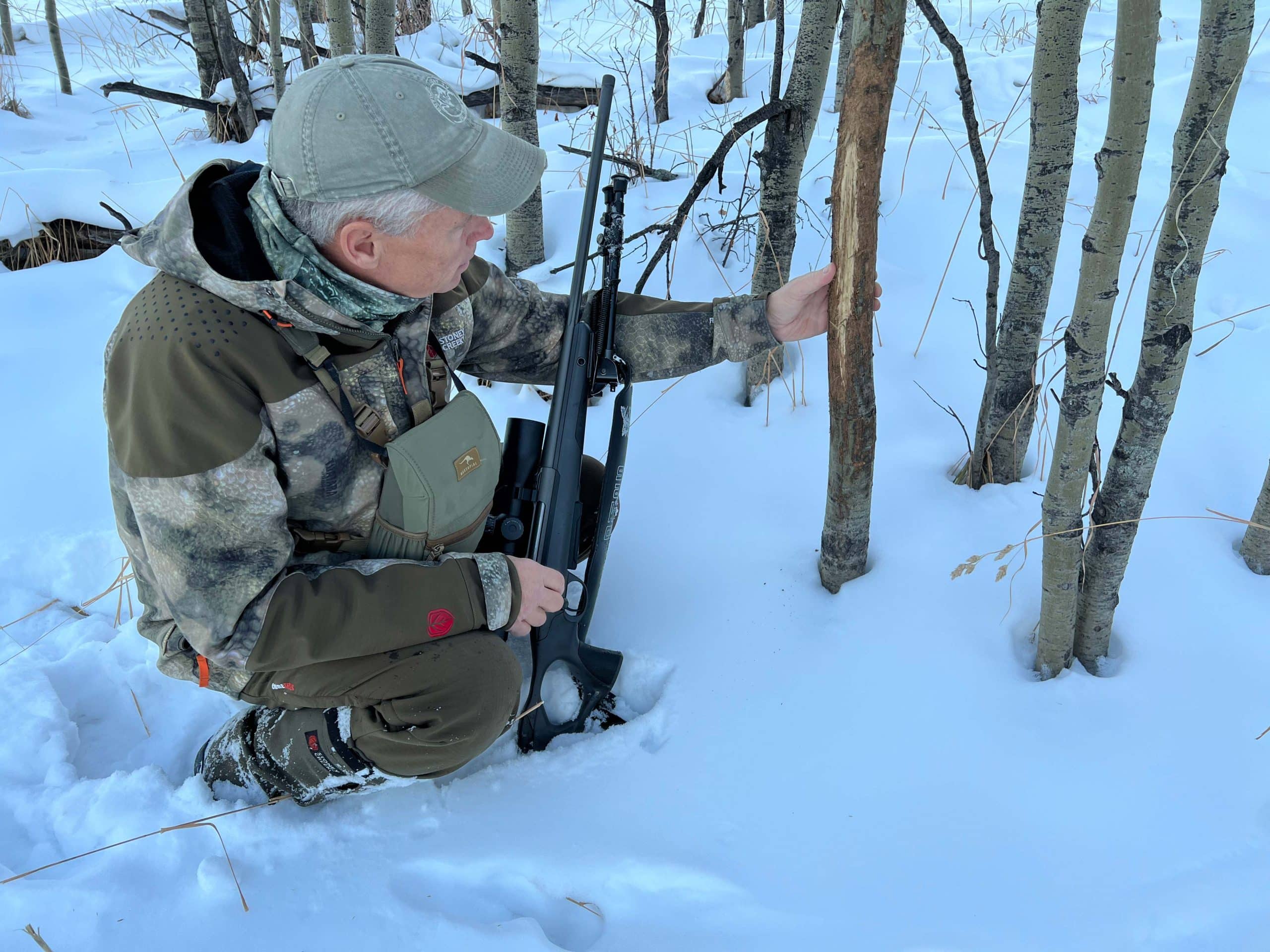
Our success was indeed bittersweet. We just stared silently at the big buck for several minutes, each absorbed in our own thoughts. We will honor this buck and his life with a mount in our home. He’s far from the highest-scoring buck I’ve ever taken, but he’s definitely the one with whom I’ve had the most history. While field dressing him, we noticed he had several deep punctures in his hips, likely a result of a fight with another buck. It appeared he was no longer king of the ridges.
As we were driving home, Vanessa looked over to me and said, “You know what the coolest thing is?”
“No,” I replied. “We never gave that buck a name,” she said smiling.
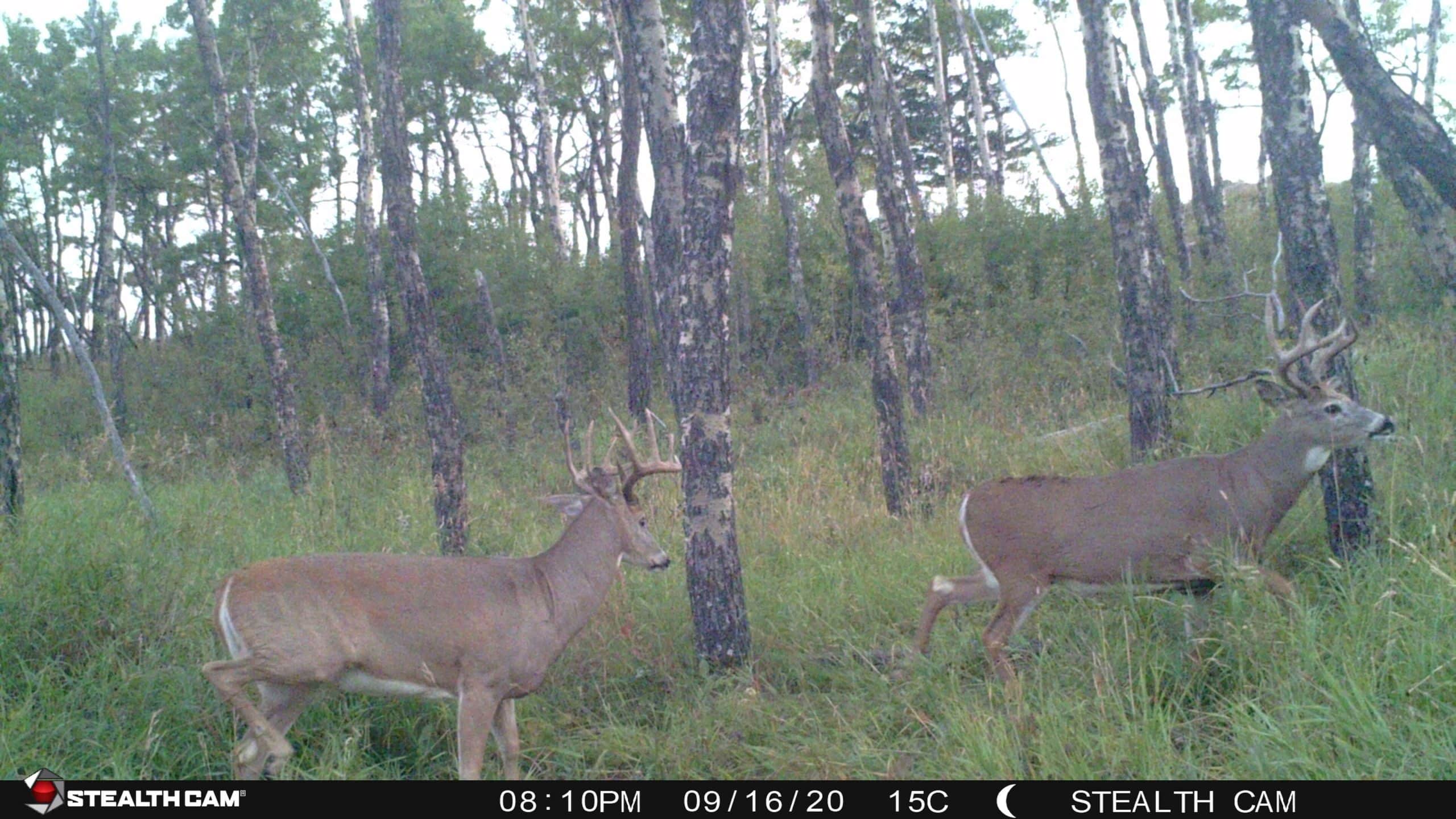
Per our affiliate disclosure, we may earn revenue from the products available on this page. To learn more about how we test gear, click here.



